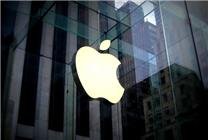Indian Smartphone Market Hits Five-Year High in Q3 2025
Summary:
- The Indian smartphone market reached its highest peak in five years in Q3 2025, with shipments totaling 48 million units, a 4.3% increase year-on-year.
- Vivo continues to dominate the market, followed by OPPO and Samsung, while Apple made significant gains, achieving a record of 5 million units shipped.
- The surge in shipments can be attributed to aggressive pricing strategies and festive promotions, although challenges remain in the mass market due to rising component costs.
The third quarter of 2025 marked a historic growth period for the Indian smartphone market, as it recorded its highest levels in five years. A report indicates that total shipments reached 48 million units, reflecting a year-on-year growth rate of 4.3%, largely driven by the festive shopping season.
Market Dynamics and Brand Performance
Vivo maintained its position as the top smartphone brand in India for the seventh consecutive quarter. OPPO made significant strides, overtaking Samsung to secure the second spot in the rankings. This move was propelled by effective offline promotions and incentive programs aimed at boosting sales. Meanwhile, Motorola emerged as the fastest-growing brand in the sector, boasting an impressive year-on-year growth rate of 52.4%. Apple also performed strongly, achieving a remarkable 25.6% growth rate and ranking fourth in the Indian market for the first time, with a record shipping volume of 5 million units.
The newly launched iPhone 16 became the best-selling model during this quarter, accounting for 5% of overall market shipments. Additionally, the iPhone 17 series, which includes the iPhone Air, contributed 16% to Apple’s quarterly sales. This performance marks one of Apple’s strongest product launches in India since 2021.
Key Growth Drivers
The surge in smartphone shipments during the festive season can be attributed to multiple market factors. Deep price reductions, attractive discounts, flexible financing options, trade-in programs, and various promotional strategies played pivotal roles in driving sales across both online and offline channels. Analysts from IDC have noted that e-commerce platforms particularly benefitted from aggressive discounts on previous-generation flagship models from notable brands like Apple and Samsung.
Segment Analysis
Average Selling Price (ASP) Trends
The ASP for various smartphone segments in India has shown diverse trajectories:
- Entry-Level (Under $100):
- Budget Range ($100–$200):
- Mid-Range ($200–$400):
- Mid- to High-End ($400–$600):
- High-End ($600–$800):
- Ultra-High-End ($800+):
The ultra-high-end category experienced a remarkable year-on-year growth of 52.9%, increasing its market share from 6% to 8%. Apple surged ahead of Samsung in this segment, capturing 66% of the market share, primarily driven by hot-selling products such as the iPhone 16 and Galaxy S24 Ultra.
Chipset Dynamics and Channel Strategies
The market for Qualcomm chipset-powered smartphones saw a year-on-year growth of 17.9%, increasing its market share to 29.2%. Noteworthy contributors included brands like Xiaomi and POCO. Conversely, MediaTek experienced a decline in its market share, dropping from 53.1% to 46.0%, with shipments decreasing by 9.7% year-on-year.
In terms of sales channels, offline retail continued its growth momentum, showcasing a 21.8% increase in shipments and rising to a 56.4% market share. This shift reflects the impact of festival promotions and partner incentive policies. In contrast, online channels experienced a decline, with shipments falling by 12%. The e-commerce focus on high-end products has, in turn, limited demand for entry-level and mid-range Android devices.
Looking Ahead
Despite the impressive figures for Q3 2025, analysts caution that the market may face challenges. While festive promotions and diversified financing solutions fueled high shipments, demand remains concentrated at the high-end. This trend exerts pressure on the budget segment, resulting in elevated inventory levels as the market approaches the fourth quarter. Additionally, rising component costs and currency fluctuations could compel brands to raise prices following the Diwali celebrations. IDC anticipates a year-on-year decline in shipments during Q4, projecting total annual shipments to fall below 150 million units.
In conclusion, the Indian smartphone market’s performance in Q3 2025 underscores a thriving industry driven by innovative pricing strategies and product releases. However, ongoing challenges may reshape market dynamics as the year progresses.








